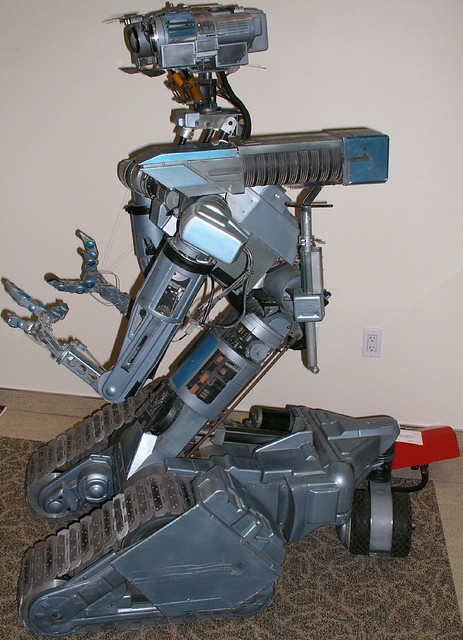Ro-bot: noun \ˈrō-ˌbät, -bət\: a machine that looks like a human being and performs various complex acts (as walking or talking) of a human being; also : a similar but fictional machine whose lack of capacity for human emotions is often emphasized –Source: Merriam-Webster
Like aliens and unicorns, I think we all have some fascination and intrigue into the world of robots. The first robot in my life was Number 5 from the great ’86 science fiction “Short Circuit.” Then there are always the classic favorites from Star Wars, then onto the more modern era of the freakish Stepford Wives and my all-time favorite robot crush, WALL-E.

Source: Wikipedia
While the notion of robots feels like it should be inputted into the literary formula of the suspension of disbelief, robots (and artificial intelligence in general) are advancing in both the imaginary and the real worlds. We are using them in our everyday lives (kudos to this cat for hitching a ride).
Up until lately, though, I think the world has been thinking of robots in terms of potential replacements or replicas of human and human function.

As I sat in a room just a mere hand shake away from NASA’s latest robot, Robonaut 2 (R2), during a live demonstration at the #NASATweetup, I watched R2 demonstrate the delicate nature by which it can fold up a blanket, find an envelope and retrieve it, recognizing that it has done its job, and now it’s time for the human to step in and take over.
R2’s twin will be making its way up to space via the last Discovery launch as part of the STS-133 mission. It will become the latest resident on the International Space Station, as “one of the most advanced pieces of hardware to ever fly to space.”
R2 is considered a “human robotic partnership,” a cooperation between humans and robots. While humans and robots have been exploring space for a while now, what hasn’t been done is creating an efficient cooperation between robots and humans to allow an efficient exploration of space. Robots do things really well that people don’t, and people tend to do things really well that robots don’t, and so in marrying these two concepts, NASA is creating a whole new paradigm.
NASA (and General Motors) has it right: we need to build robots that complement what we, as humans, can do. And this should be true of any technology; let’s leverage technology so we can better position ourselves to achieve greatness, not outdo ourselves as a human race. Replacement isn’t the answer; the answer is cooperation and collaboration.
Written by: Becca Colbaugh | Executive Producer, JESS3
Join the Conversation